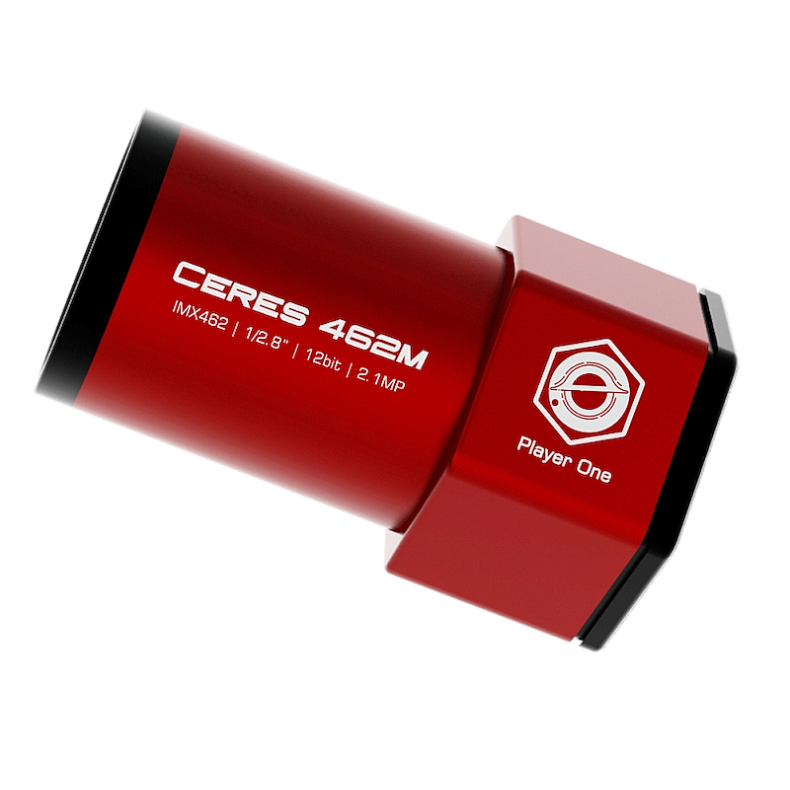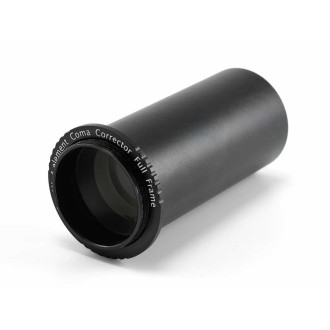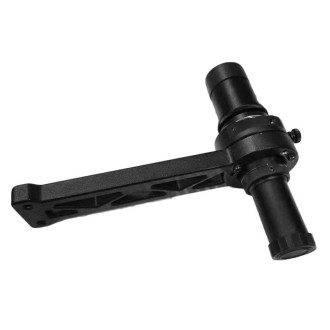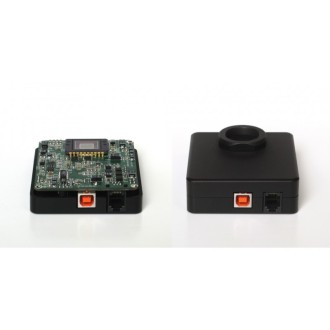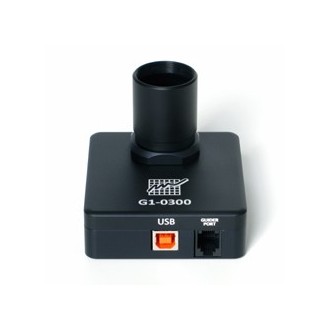Player One Ceres 462M Mono Camera (IMX462)
| Carrier | Description | Estimated Delivery | ||
|---|---|---|---|---|
 |
Home delivery - International | Home delivery - International |
Thursday, 8 May - Thursday, 15 May |
|

Home delivery - International
Home delivery - International
Estimated delivery:
Thursday, 8 May - Thursday, 15 May
The Ceres 462M camera is a guide camera developed by Player One Astronomy, which adopts a 1/2.8" format Aptina IMX462 sensor. Thepixel size of 2.9um can reach a well depth of 12 ke with a total of 2.1 MP (resolution is 1944 * 1096), and the diagonal is 6.5 mm.

Highlights
The "Dwarf Plane "t series incorporates a USB 3.0 data port (500 MB/s), which can provide more than 10 times the speed of a USB 2.0 device (60 MB/s). Whatever you want to do, orientation or imaging, this camera series can handle it very well.
The diameter of the camera is 1.25 ″, it can fit into a 1.25 ″ bracket and makes the setup shorter.

Features
The orientation camera is smaller than a planetary camera, that's why we choose dwarf planets to name them.
The size of each dwarf planet represents to some extent the size of the camera sensors. We will name the cameras with 1/3 ″ sensor Ceres.
Download drivers and software: https://player-one-astronomy.com/service/software/
Download manuals: https://player-one-astronomy.com/service/manuals/
Latest technology.
Guide cameras developed by Player One Astronomy use the technological regular hexagon to build the main body line.
DPS Technology
Player One guidance cameras incorporate DPS (dead pixel removal) technology. DPS involves scanning a large number of dark images for anomalous fixed pixels and recording this map in the camera's memory.
When the image is taken, this DARK map will remove these dead pixels from the image.
%20%E2%80%93%20Player%20One%20Astronomy%20%E2%80%94%20Mozilla%20Firefox.png)
Over-voltage and over-current protection mechanism
Player one ensures the safety of your device and other equipment by overvoltage and overcurrent protection mechanisms.
Data port
When the camera is connected to the USB3.0 interface and the maximum resolution is used, it can reach 136 fps in RAW8 mode (10-bit ADC).
When recording images, as the actual writing speed will be affected by the writing speed of the hard disk itself, when the writing speed of the hard disk is slow, the recording may not reach the theoretical speed. It is recommended to use a high quality SSD drive for recording data to get the maximum performance from the camera in planetary imaging.
Use the ST4 guide cable to connect the camera and the guide port of the guide mount.

Performance

Read noise
As for read noise, we solemnly promise that all values are obtained from real tests. And for users, they can use SharpCap 4 for testing. SC4 has a function called sensor analysis, which provides a very simple way to test read noise.
After many rigorous read noise tests, the Ceres 462m camera can achieve a low read noise of 1.1e with a gain of 80.
If you are interested in testing the read noise, you can do it yourself, which is very simple.
EQ curve

Technical Schematic

Features
- Sensor: Sony IMX462 CMOS (Mono)
- Diagonal: 6.5mm
- Total Pixels: 2.1 Megapixels
- Max Resolution: 1944×1096
- Pixel Size: 2.9μm
- Pixel size 5.6mm×3.2mm
- Max acquisition rate 136FPS(10bit)
- Rollingshutter
- Exposure time: 32μs-2000s
- Read noise: 7.3e - 3.6e
- Peak QE: ≈91%
- Full wellP: 12k e
- ADC: 12 bits
- Available port: USB3.0/USB2.0
- Adapter: 1.25″ / M28.5X0.6
- Back focus: 7.5mm
- Protective glass: D21*1.1MM High quality AR Plus multilayer coating (anti-reflective)
- Diameter: 40mm
- Weight: 65g
- Resolution: with USB3.0. 10bit ADC resolution. 1280×960 - 65 FPs
In the box


